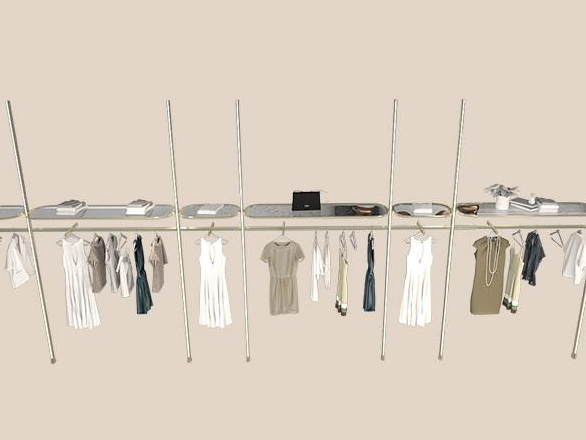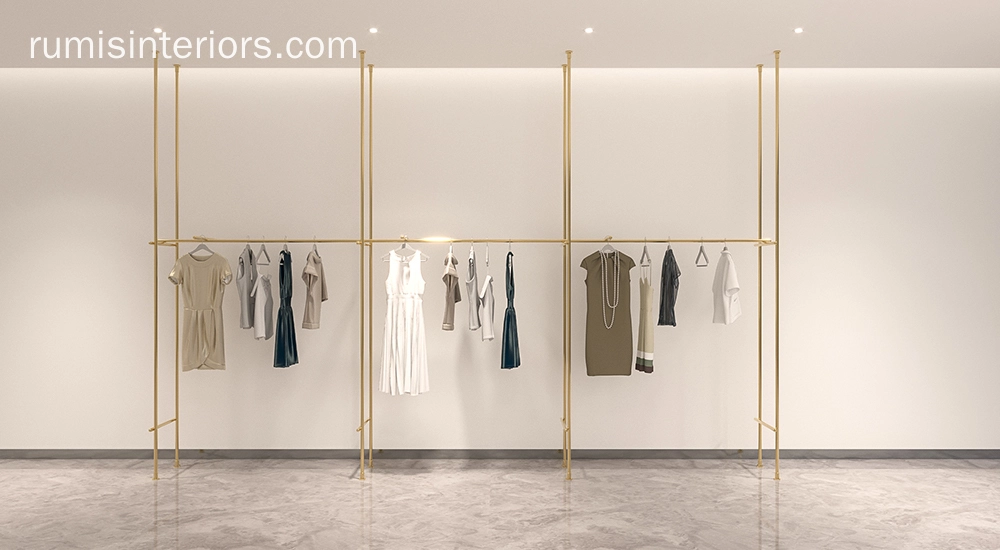Introduction
In the competitive world of fashion retail, the way clothing is displayed can make all the difference. A well-designed display not only attracts attention but also converts window shoppers into customers. Whether you run a brick-and-mortar store or an e-commerce platform, understanding the importance of effective
clothing display systems is essential for maximizing sales and creating a memorable shopping experience. Proper display systems ensure that products are presented in the best light, literally and figuratively, helping to communicate your brand’s message and elevate customer engagement.
In this guide, we’ll explore how to design and implement effective clothing displays that work across various retail environments. We’ll also share some expert tips on choosing the right display solutions, covering everything from mannequins to modular systems. These tips are aimed at ensuring your products shine, whether on a retail floor or through an online platform, with a focus on boosting your visibility and sales.
Why Proper Clothing Display Matters
Clothing display is more than just arranging products on shelves or hangers. It's about creating an environment that showcases your brand’s identity, enhances product appeal, and leads to increased customer interaction. A great clothing display draws attention to your most popular items, highlights seasonal trends, and communicates the lifestyle that your brand represents. It also plays a crucial role in customer experience. When items are displayed thoughtfully, they are easier to shop, which reduces decision fatigue and encourages impulse buys.
Retailers who master the art of clothing displays can also enhance their store's ambiance, helping customers feel more comfortable and engaged. It’s no wonder that well-placed displays can be one of the most cost-effective ways to boost sales, as they create a positive emotional connection between customers and the products they see. Good displays also allow customers to envision themselves wearing the clothes, increasing the likelihood of making a purchase. Understanding this connection between display and customer psychology is key to improving overall retail performance.
Best Ways to Display Clothing in Retail Stores
Mannequin Displays
Mannequins are one of the most effective ways to display clothing. They offer a lifelike representation of how the garment fits, helping customers visualize themselves wearing the item. Full-body mannequins are perfect for showcasing complete outfits, while partial mannequins can highlight specific items such as jackets or accessories.
Regularly rotating outfits ensures freshness and keeps the display interesting for repeat customers. It also helps keep your store’s displays aligned with current fashion trends or seasonal changes. A mix of both male and female mannequins can appeal to a broad customer base and encourage more foot traffic. Mannequins make the shopping experience feel more interactive and real, inviting shoppers to touch, try on, and ultimately purchase.
Folded vs. Hanging Displays
Another essential aspect of clothing display is deciding between folded or hanging items. Both have their advantages, depending on the type of clothing you are showcasing. Folded displays are ideal for casual wear, such as t-shirts, jeans, or sweaters, as they allow customers to see the fabric's texture and color clearly without the clutter of too many hangers.
On the other hand, hanging displays are best for dresses, suits, and formal wear. They highlight the flow and silhouette of the clothing, offering a clearer view of the piece’s overall design and fit. Using a combination of both folding and hanging techniques ensures that your store layout remains dynamic and organized, catering to different types of clothing.
Color Blocking & Theming
One of the most visually striking ways to display clothing is through color blocking and thematic grouping. Grouping clothing by color, style, or fabric creates a cohesive visual experience that helps customers find what they are looking for faster. It also makes the store more visually appealing, as the eye is naturally drawn to coordinated arrangements.
For instance, seasonal themes such as winter coats or summer dresses grouped together in color-blocked sections can attract attention and draw customers to specific displays. Themed displays also help convey the mood of a collection, whether it’s for a holiday, special promotion, or new season. This thematic approach encourages customers to spend more time exploring, which can increase sales opportunities.
Lighting & Positioning
Lighting plays a crucial role in any clothing display. The right lighting can highlight the colors and textures of your clothing, making them more appealing to customers. Warm, soft lighting creates an inviting atmosphere, while brighter lighting can help emphasize key pieces or new arrivals.
Positioning also matters. Always place your featured items at eye level, where they are most likely to be seen and engaged with. This is particularly important for high-margin or bestselling items that you want to move quickly. Spotlights and accent lights can be used to draw attention to specific sections of your store, while overall lighting should be consistent to create a balanced atmosphere throughout.
How to Display Clothing for Stores
The way clothing is displayed can significantly impact how customers perceive your brand and how easily they can find what they’re looking for. A store that is organized and visually appealing encourages shoppers to browse longer and return more frequently. To achieve this, consider how your display systems interact with your store’s layout.
When creating a clothing display, it’s essential to align the design of your displays with your store’s aesthetic. This includes selecting the right furniture and fixtures, from modular systems and adjustable shelving to bespoke
display racks. Each display should be easy to navigate and designed with both the shopper's experience and the brand’s image in mind. Modular systems offer flexibility, allowing you to adjust layouts as needed to accommodate different seasons, promotions, or product ranges.
Using high-quality, durable materials for your displays can help ensure longevity and maintain a polished look over time. For example, using finishes like matte, gloss, or wood grain can enhance the tactile experience, while adjustable and transparent display systems ensure that items are accessible and visible from multiple angles.
Creative Clothing Display Ideas for Home & Styling
When it comes to home and personal styling, creative clothing displays can transform a simple room into a stylish and functional space. Whether for personal use or a small boutique, modular display systems can be adapted to suit any interior style. Using versatile, adjustable display racks or hangers, you can easily switch up the look of your space, making it easy to showcase your latest fashion finds.
Consider incorporating decorative elements like plants, vintage trunks, or other accessories to complement your clothing displays. These items add texture and personality, creating a more engaging and visually dynamic space. Additionally, for more intimate or home-based displays, modular systems can be used to craft personalized setups that reflect your taste while providing practical storage solutions for clothing, shoes, and accessories.
Common Mistakes to Avoid in Clothing Display
While clothing displays are a powerful tool, there are some common mistakes that retailers often make. One of the most significant mistakes is overcrowding displays, which can make it difficult for customers to focus on individual items. A cluttered display can overwhelm potential buyers, so it's important to leave space around each item to give it room to shine.
Another mistake is not updating displays regularly. Customers are likely to overlook stale displays, so rotating items based on the season, trends, or promotions is essential. It’s also crucial to avoid using lighting that is too harsh or inconsistent, as poor lighting can detract from the appeal of your clothing. Proper lighting helps highlight the best features of your clothing, making it more likely that customers will make a purchase.
Conclusion
Clothing display systems play a significant role in enhancing your retail or e-commerce business. Whether you're showcasing items in a physical store or presenting products online, using the right techniques and systems can increase customer engagement and drive sales. By employing strategies like mannequin displays, color blocking, and effective lighting, you can make your store more inviting and appealing to customers.
If you're looking for tailored solutions that ensure your displays reflect your brand’s unique aesthetic and maximize customer interaction, RUMIS is here to help. As a leader in modular display systems, RUMIS provides high-quality, customizable solutions that meet the needs of fashion retailers worldwide. Explore RUMIS’ offerings today at
www.rumisinteriors.com and take your retail display systems to the next level.
FAQs
Use vertical space with wall-mounted racks and slim mannequins to maximize visibility.
How can I make my online clothing photos stand out?
Use natural lighting, minimal backgrounds, and lifestyle shots to showcase the garment in use.
Should I fold or hang knitwear?
Fold knitwear to prevent stretching; hang structured items like blazers.
How often should I change my store’s clothing displays?
Refresh displays every 1-2 weeks to maintain customer interest.
What lighting is best for clothing displays?
LED or warm white lights enhance colors without distorting fabric tones.

























Facebook
LinkedIn
Instagram